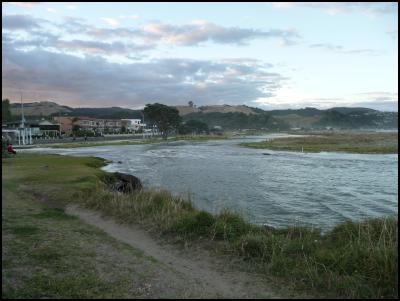Call for snaps of super moon high tides
MEDIA RELEASE
11 November 2016
Call for snaps of super moon high tides

King tide at Whitianga in
February 2014.
She’s going to be a big one and so are the high tides.
Next week’s super moon event will bring a series of king tides on Waikato’s coasts raising high tide levels to 100-year peaks (not counting potential sea level rise due to climate change or storms).
And Waikato Regional Council is keen for citizen photographers to send in their snaps to help staff build their understanding of where tides reach under such extreme conditions.
“We’d really appreciate any photos people take so that we can document what’s happening and get a clearer picture of potential coastal hazards,” said senior regional hazards advisor Rick Liefting.
The highest tides over the week on the west coast will be Tuesday 15 November around 10.45 am and Wednesday 16 Novemberaround 11.30 am. On the Firth of Thames coasts they will be on Wednesday 16 November around 9 am and Thursday 17 Novemberaround 10 am. On the east coast of the Coromandel they’ll occur on Thursday 17 November around 9.30 am and Friday 18 Novemberaround 10.30 am.
People can email their photos along with their observations and locations to coastalinundationtool@waikatoregion.govt.nz.
They can also use the council’s coastal inundation modelling tool to see where the king tides are likely to reach. It’s available atwww.waikatoregion.govt.nz/coastal-inundation-tool/
“The ‘Max Tide’ figures on that site show maximum high tides levels, not taking into account any storm or wave effects and also don’t account for any projected sea level rise under global warming. However, the tool can be used to see what impact future projected rises in sea level may occur. The king tides next week are expected to be at around those ‘Max Tide’ levels due to the super moon’s impacts,” said Mr Liefting.
He said the council’s regional hazards team will issue advice if the king tides are likely to coincide with weather or wave conditions that would lead to any heightened risks for communities.


 Gordon Campbell: On The Trump Upside, And Peters Persecution Of Trans People
Gordon Campbell: On The Trump Upside, And Peters Persecution Of Trans People New Zealand Defence Force: Second World War Veterans Receive Message From King Charles
New Zealand Defence Force: Second World War Veterans Receive Message From King Charles New Zealand Government: More Than 900 Health Graduates To Receive Financial Boost Through Bonding Scheme
New Zealand Government: More Than 900 Health Graduates To Receive Financial Boost Through Bonding Scheme New Zealand Police: Stacks Of Cocaine Unpacked In Mt Wellington
New Zealand Police: Stacks Of Cocaine Unpacked In Mt Wellington Te Pāti Māori: Te Pāti Māori Make Submission To Privileges Committee In Absentia
Te Pāti Māori: Te Pāti Māori Make Submission To Privileges Committee In Absentia PSA: PSA Forces Changes To Restructure Of Data & Digital And Pacific Health
PSA: PSA Forces Changes To Restructure Of Data & Digital And Pacific Health Waitangi Treaty Grounds: Anzac Day Commemorative Evening Service At The Waitangi Treaty Grounds
Waitangi Treaty Grounds: Anzac Day Commemorative Evening Service At The Waitangi Treaty Grounds


